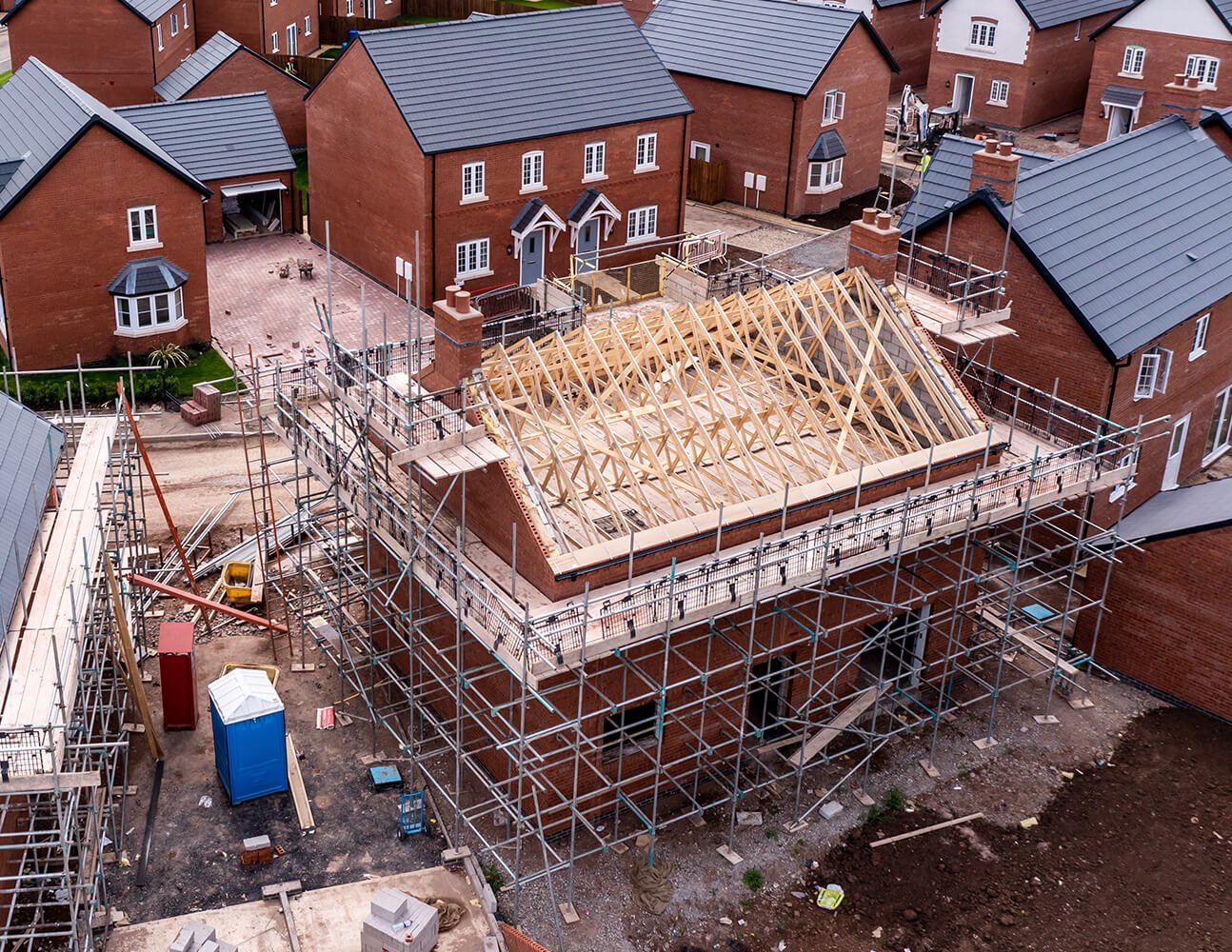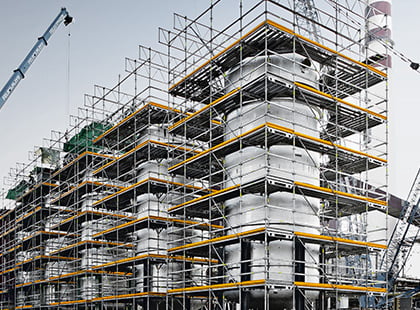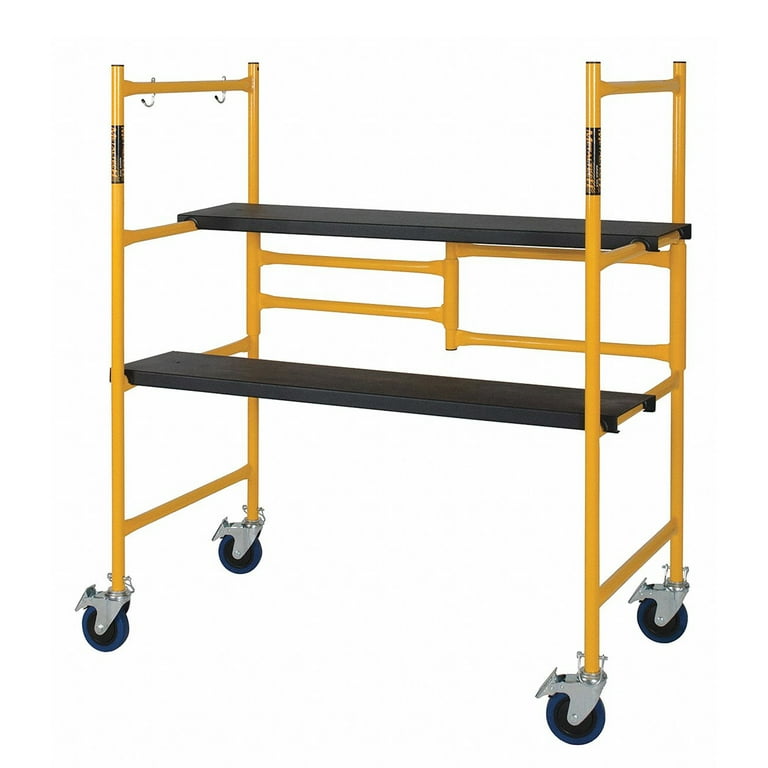Temporary Roof Scaffolding for Your Construction or Renovation Project
Temporary Roof Scaffolding for Your Construction or Renovation Project
Blog Article
Exploring the Numerous Kinds Of Scaffolding Used in Building Jobs
The building and construction market depends heavily on numerous types of scaffolding to meet particular project requirements, each offering unique advantages and applications. Traditional frame scaffolding offers a durable structure for general jobs, while suspended scaffolding is vital for work on high-rise structures.

Conventional Framework Scaffolding
Standard frame scaffolding is one of the most commonly utilized approaches in the building industry due to its robustness and versatility. This system includes horizontal and upright structures that are set up to develop a secure platform for materials and employees. The major elements include upright articles, horizontal journals, and diagonal braces, which together provide a strong framework that can support considerable loads.
One of the key benefits of conventional structure scaffolding is its adaptability to numerous construction tasks, varying from domestic buildings to huge business frameworks. The modular style allows for simple setting up and disassembly, making it reliable for both long-term and temporary tasks. In addition, the system can be customized in height and width, fitting different building layouts and site conditions.
Safety is extremely important in scaffolding applications, and conventional framework systems are furnished with guardrails and toe boards to avoid drops and make certain worker protection. Moreover, regular inspections and adherence to safety and security laws are essential in preserving the stability of the scaffold. Overall, conventional structure scaffolding continues to be an essential selection in the building and construction sector, giving a reliable system for labor and enhancing overall job performance

Suspended Scaffolding
Suspended scaffolding supplies a special service for building and construction tasks that need access to elevated surface areas, specifically in situations where typical frame scaffolding may be impractical. This kind of scaffolding is commonly put on hold from the roof or top levels of a framework, utilizing a system of ropes, platforms, and pulleys to develop a working room that can be readjusted to numerous elevations.
One of the key advantages of put on hold scaffolding is its flexibility. It can be quickly repositioned or decreased to suit adjustments in construction needs, making it perfect for tasks such as window installment, frontage work, and maintenance on skyscraper structures. Additionally, the very little impact of suspended scaffolding permits much better use ground area in urban settings, where space is often limited.
Safety and security is an essential consideration in making use of put on hold scaffolding. Appropriate rigging and securing systems should be utilized to make certain stability and avoid crashes. Operators must also be trained in the secure use this tools. On the whole, put on hold scaffolding provides a reliable and reliable option for accessing hard-to-reach areas in various building and construction situations, boosting both efficiency and safety and security on site.
System Scaffolding
System scaffolding, often considered a modern service in the scaffolding sector, contains pre-engineered components that can be swiftly assembled and adapted for numerous construction tasks. Scaffolding. This sort of scaffolding is identified by its modular design, which permits convenience Related Site and efficiency on task sites, suiting various elevations and structural demands
Usually made from high-strength steel or aluminum, system scaffolding uses improved toughness and stability. The parts include upright messages, straight ledgers, and angled braces, which interconnect securely, ensuring a durable framework. The layout usually includes standard installations, streamlining setting up and disassembly processes, therefore minimizing labor time and prices.

Rolling Scaffolding
Moving scaffolding is a functional choice to typical fixed scaffolding, developed for wheelchair and simplicity of use on building websites. This kind of scaffolding includes a system sustained by frameworks with wheels, permitting employees to easily move it as required. The movement function dramatically improves productivity, as it minimizes downtime related to dismantling and putting together taken care of scaffolding.
Commonly constructed from light-weight materials such as aluminum or steel, rolling scaffolding provides a sturdy yet portable solution for projects calling for constant repositioning - Scaffolding. It is especially useful in jobs such as painting, drywall installation, and electrical job, where access to numerous elevations and areas is needed
Safety and security is vital in rolling scaffolding design, with attributes such as securing wheels to stop unexpected motion when in operation, and guardrails to safeguard employees from drops. Furthermore, many designs are flexible in elevation, suiting various task demands.
Cantilever Scaffolding

The layout of cantilever scaffolding commonly entails making scaffolding express use of arms or braces anchored to a building or framework, making it possible for the system to prolong external safely. Safety is paramount; thus, these scaffolds should be engineered to endure environmental conditions and various lots. Regular examination and maintenance are vital to ensure structural integrity and worker safety.
Cantilever scaffolding is preferred for its convenience and reliable usage of space, making it a preferred selection in urban environments where room constraints are usual. In addition, it assists in simpler accessibility to high altitudes, eventually adding to the total performance of building and construction tasks. Similar to all scaffolding types, correct training and adherence to safety requirements are important for workers utilizing cantilever scaffolding.
Final Thought
In conclusion, the varied types of scaffolding made use of in building projects each serve unique objectives customized to certain site requirements. Typical frame scaffolding offers stability, while put on hold scaffolding supplies flexibility for raised jobs. System scaffolding helps with fast setting up, and rolling scaffolding enhances flexibility for differing work settings. Cantilever scaffolding successfully deals with barriers in urban setups. Understanding these scaffolding kinds is crucial for optimizing security and efficiency in building and construction, eventually adding to the effective conclusion of tasks.
Traditional frame scaffolding offers a durable foundation for basic jobs, while put on hold scaffolding is crucial for job on high-rise frameworks.Moving scaffolding is a flexible choice to traditional set scaffolding, designed for mobility and simplicity of use on building websites. As with all scaffolding guidelines scaffolding types, appropriate training and adherence to safety and security standards are crucial for workers making use of cantilever scaffolding.
Traditional frame scaffolding offers stability, while suspended scaffolding provides versatility for raised tasks. System scaffolding assists in fast assembly, and rolling scaffolding enhances flexibility for differing work atmospheres.
Report this page